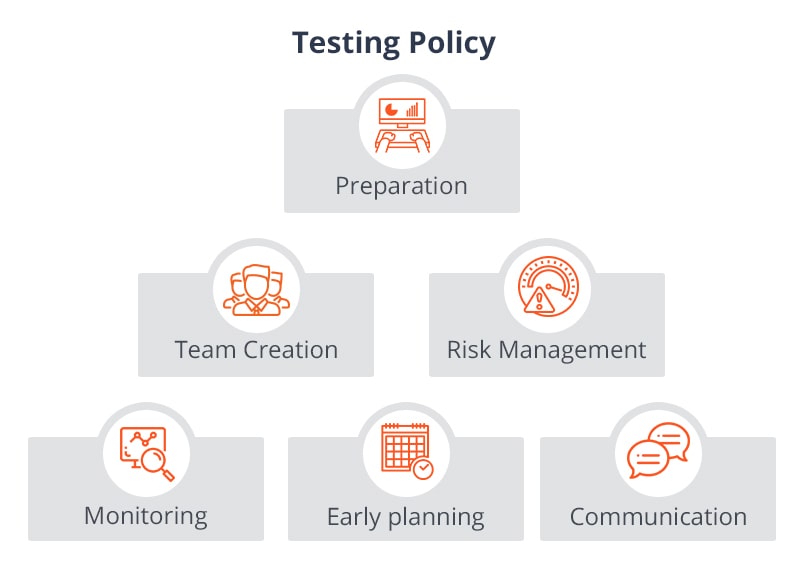Basics of Software Testing Policy
by Nataliia Vasylyna | October 14, 2011 10:00 am
What is behind the notion of policy in software testing? Why do we need it? What are the main points to consider while developing it? This article shows the key elements which form the ground for building effective software testing strategies.
Practical application of principles of the software testing policy
The main aim of the testing policy is to ensure the right direction of the software testing process and its effectiveness. Priority goals also include to verify, validate and estimate the quality of the product under examination so it could meet the expectations of end-users. Software testing also has its proper procedure with common principles which are called “test policy”. It is a system, which describes the approach that should be applied towards the testing. These standards include test objectives, benefits, indicators of quality and performance, test environment and priority targets.
Preparation
Firstly, you should start testing with the maximal provision of general information about the purpose of the software, its features and the target audience of users. It is important to have a quick demo, which will allow to identify important issues and to suggest possible solutions if the product is controversial.
The next decisive step is to provide all available specifications, operating information, available build versions, user experience, previously known peculiarities, and the most problematic issues.
Team creation
Another key point is the evaluation of software by specialists who possess a specific set of skills. However, it is also reasonable to involve testers, who are not familiar with a particular type of software closely. This will allow testing the program with a “fresh look”. Testing specialists would encounter the same technical difficulties that may arise for ordinary consumers. It is one of the ways to identify and remove the most probable drawbacks.
Risk management
Testing should be focused on identifying the sources of detected failure risks. The possibility of errors may cause significant damage to consumers, such as disclosure of personal data, false financial transactions or the harmful impact on the work of other systems. However, testing should not be limited only to the examination of threats, but also must check the functionality visible and important for customers, such as design and usability.
Monitoring
It is important to display the test results clearly by recording data in the test documentation to understand if the testing approach is appropriate. This will facilitate the implementation of the changes and substitution of existing data. This will also help to track the testing progress.
Early planning
To build an effective test strategy do not forget to analyze the experience of competitors and take advantage of it. Examine the available competitors’ samples and marketing materials to use their software testing best practices. The early planning of testing strategies based on these techniques will increase the chances of successful release on market and profit gaining.
Communication
The last but not the least is to communicate with product developers or owners, as well as with potential users to know expectations from the soft. Involve the key stakeholders into quality control to meet the product requirements.
Let an independent QA provider assist you in reaching the highest quality of your software and gaining positive user experience. Act in compliance with the policy rules and reduce the risks of failure.
Learn more from QATestLab
Related Posts:
- 7 Types of Security Testing: https://blog.qatestlab.com/2020/09/07/security-testing-types/
- Keep the Business Operating Remotely: Guides and Hints From COO: https://blog.qatestlab.com/2020/05/25/hints-for-remote-business/
- Practical tips for PM: How to build a QA Dream Team: https://blog.qatestlab.com/2019/10/22/build-qa-team/
Source URL: https://blog.qatestlab.com/2011/10/14/basics-of-software-testing-policy/

